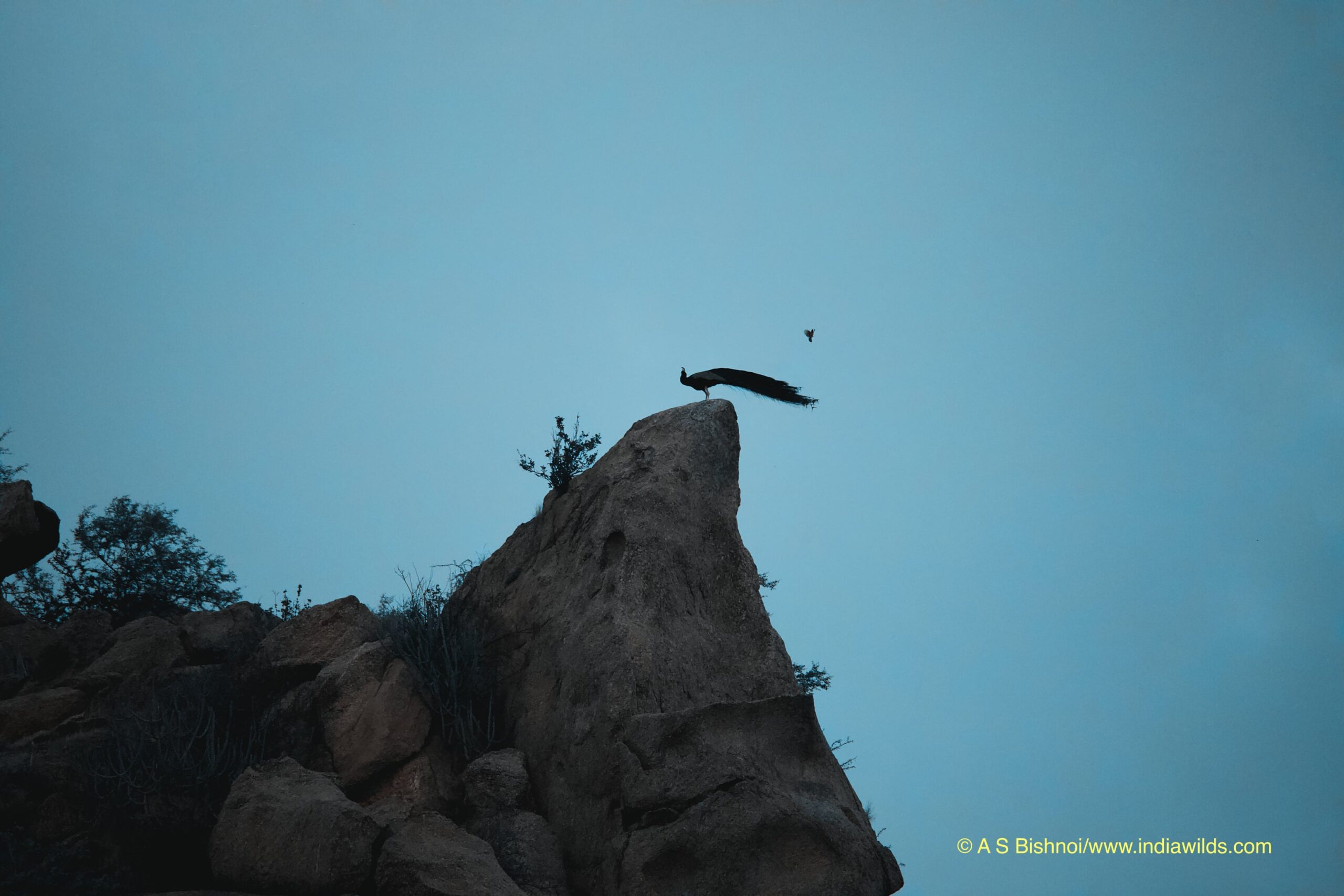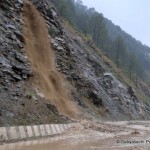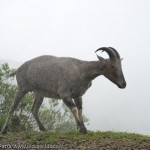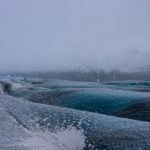Journey to Leopard Country
Mrs. Shakti & Mr. A.S.Bishnoi
Rajasthan is India’s largest state and has more rural areas. In 1946, Maharajah Umaid Singh of Jodhpur broke ground on a dam on the Jawai river to help bring in irrigation in this mostly arid landscape. This is the biggest dam in the western Rajasthan and the large reservoir helped attract lot of migratory birds in winter. Even today, it provides incredible sightings of species like the Sarus Crane, Indian Courser, Osprey, Pelicans, Bar- Headed Geese, various species of waterfowls, pipits, larks, pratincoles, and other raptors to mention just a few. Marsh crocodiles can be seen basking at Jawai dam.
This landscape is also part of the ancient Aravalli range, a mountain range which is even older than the Himalayas. This mountain range runs roughly diagonally across the state of Rajasthan. The southern part of the range is formed by granite and raises to its highest at 1722 Meters at Mt Abu.
The dam in Jawai, rocky mountain range, many seasonal, scrub forest and the low density of human population in the area has been ideal leopard country, especially since pre-independence when tigers were ruthlessly wiped out and only leopards remained. The place has been regularly used by Shepherds as grazing grounds. The shepherds and local people are used to leopards and take precautions to protect their livestock.
With increase in human population there has been impact on the forests and the population of wild animals like caracal, chinkara, desert cat, wolf, sloth bear, jackals, hyena etc have decreased.
Leopards of Bera:
Many years ago, a local feudal lord Thakur Devi Singh started a tourism venture and the world came to know about the leopards of Bera. Soon several tourism operators started bringing in tourists to this place. We too decided to explore Bera in the month of July to unwind after Covid induced lockdown. The 1500-kilometer journey from Hissar to Pune with stop over in Bera was really worthwhile.
In the early morning leopard safari, as we rushed to catch the sight of leopards returning from its nocturnal hunts, we see sleepy men, women and children walking along the path, each one carrying a container of water, a can or a steel lota, on their way to defecate among the scrub and the drifts of plastic waste. Open defecation is still widely prevalent.
In a country that has been changed almost beyond recognition by two decades of explosive economic growth, electrification here is patchy, the crops of mustard and wheat painstakingly harvested by hand. The land around the dam is known informally by the river’s name. The rich river-bottom soil, which for millennia has supported clans of Rajput farmers, is broken by dramatic solitary hills, stark uninhabited granite peaks, almost all of which are marked by a shrine or temple. Through this country wander semi-nomadic herders of the Rabari tribe following ancient routes that take them south into Gujarat and east into Madhya Pradesh.
The Rabari are semi-settled nomads, with a different view of the world. Women conduct business affairs and hold a lot of the family wealth in the portable form of jewelry, while the men folk roam with the animals. And in the hills live dozens of leopards, predators who by day watch the humans go about their business, and by night come down to hunt, walking the streets stalking the livestock of the villagers.
Leopard Sighting in the hills:
Just before dawn, we were fortunate to spot one mother leopard on the hill and cubs hiding in the cave. The guide was ever enthusiastic to take us near the cave, but it started raining and I had to protect the camera. Fortunately, my wife was carrying umbrella and that helped us to have a closer look of mother leopard amidst rain. The glint in the eye of leopard was startling yellow-green. Languorously stretching, occasionally changing position, the leopard appeared to be unconcerned by the humans watching from a distance, on a jeep at the foot of the hill. A full-grown leopard with muscular forelegs and a powerful jaw is a powerful predator. From its pose a fearful person can imagine that the leopard is ready to pounce. Yet we were comfortably watching this majestic animal and the leopard was also in no mood to move from its comfortable position.
The tour operator took us to watch a mother and her cubs prowl about outside a cave partway up a hill. The mother leopard had earlier that day killed a goat and dragged the carcass up the hill to eat. By the time we reached, the leopard family had a hefty meal and were relaxing in the cave. Only female leopard surfaced perhaps by instinct to look out for any possible danger when we spotted her. She was relaxed and poised. We kept on soaking in the magnificent view of the leopard.
The sky dusked and the shadows got long and hard, the sounds of the village neared to silence except evening bhajans, temple bells and it was startlingly close to leopard habitation. Dusk encroaches and the rocks turn into silhouette forms giving ample opportunity to hide in darkness. Barking dogs, a transistor radio, the coughing of a generator and honking of our jeep to get some space through the village were the noise breaking the melancholy of the sounds of the place. The elevation creates a natural boundary between the two worlds — the cats above and the humans below — there was no illusion that we were worlds apart though staying close by. This is the real India, where man and animal are at peace with each other.
Around the world, from the savannas of Kenya to Brazil’s Pantanal wetlands, when big cats pose a threat to poor communities, the same sad story prevails: Cats kill valuable animals. Occasionally they kill people, often children, who are small enough to be carried away. And then people kill the cats. It is weekly news in India, where leopard has entered the civilized barricaded society took away pet dogs, killed livestock or wounded people. Yet in Jawai no one has been taken by a leopard for over 150 years. Serial safarigoers, equipped with expensive long lenses and wardrobes of khaki clothing — to a bouncy and sometimes hair-raising jeep ride through the countryside, past antelope, porcupine, crocodiles and all manner of bird-life, to look for leopards.
In parts of Africa where leopards’ prey is more scarce, their territories can be huge, on the order of several hundred square miles for an adult male. Females will have territories within that of a dominant male, staying close to places where they can raise their young. If a cub is female, a mother will cede territory to her. If it’s male, it will usually be pushed out, forced to roam more widely. In Jawai, where territories consist of a network of hills connected by corridors of farmland, leopards needn’t travel far for food and do not feel threatened by the humans around them. It is generally in places where humans have made attempts to kill or expel leopards, such as in Uttarakhand, that attacks are more common. Over a hearty breakfast of local food being cooked, one of the old man explains his own theory, that the big cats that become “man eaters” are old or weak, too slow to catch other game or too toothless to fight. In Jawai, strong young males are always coming into conflict with their elders, who may well be taken care of before they become a problem.
Our operator was also keeping the database of every leopard sighting, creating entries not unlike Facebook profiles for individual cats. In a month when leopards kills at least good number of goats, three dogs, buffalo calves and a young cows, all from a single village. For a poor community, this is a significant economic loss. Yet across Jawai, the leopards seem to be viewed as a blessing. People stand on their roofs to watch them. They take pleasure in their presence. These days the Government gives them compensation for the loss of livestock, so there exists a kind of symbiotic relationship.
Fragile Coexistence?
How long can Jawai’s fragile entente between humans and leopards persist? For the moment, the tourist footprint is light. Jawai camp is small, exclusive and maintains good relations with the community. But more cars and jeeps are arriving, bringing people to look at the wondrous cats. Our guide believes that, unless some kind of regulation is put in place, it would become too crowded and the leopards would be forced to avoid the disturbance and perhaps migrate east into the high Aravalli Mountains. Creating a national park and displacing the farmers and herders would destroy the lifeworld of Jawai’s people and remove the leopards’ main source of food. Such a park would have to be stocked with wild game to make up for the vanished livestock. Unfortunately, that would take ages to create as wild life will depend on forest which has good biodiversity. Different trees flower and bear fruit in different months and hence wild animals move around and can find food. With limited number of tree species in a forest the herbivores will not be able survive and that would cause problems for the leopards.
Mines are a scourge of our biodiversity. They pockmark and ravage the landscape stripping the trees, wildlife and the topsoil, leaving behind a land good for nothing. There were 12 mines allotted in the area and another 144 in the pipeline. There was in-fact mining to be undertaken but heavy opposition from local people forced the Government authorities to cancel all permissions. There is a lot of private land ownership and the owners can be susceptible to inducements. So, bringing all of those under the ambit of Community reserve may be a good idea.
However, other issues have emerged over the last few years with the area gaining popularity. Hotels and guesthouses have rampantly come up to cater to the tourist influx, besides unregulated safaris that have little regard for rules or wildlife. Uncontrolled commercialization is the bane of wildlife conservation. Everything is butchered under the sword of greed. It is important for all stakeholders to understand the culture, landscape, livelihoods and maintain the delicate balance. Else everything will be lost forever.
- Ladakh: An Enchanting Landscape - 28 June,2022
- Changes observed during a decade long love affair with Chilika - 31 March,2022
- Journey to Leopard Country - 30 December,2021













Leave a Reply